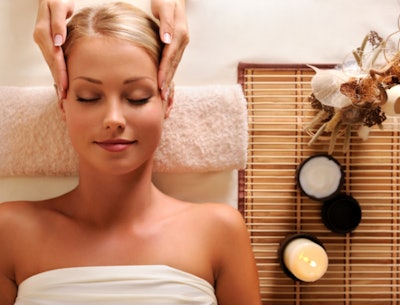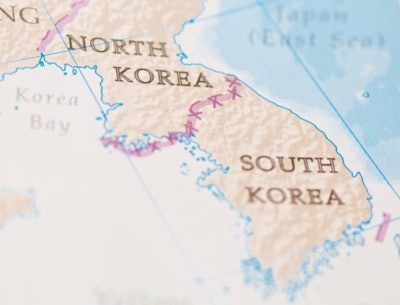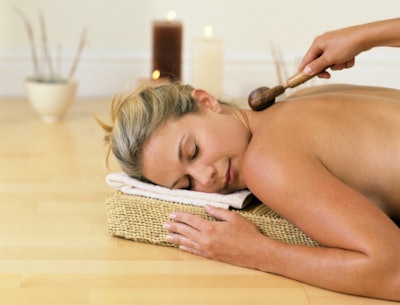 Istock
IstockIstock
A massage therapist travels the world to observe different cultures’ attitudes about physical touch.
Kate Schriner is a licensed clinical massage specialist at ProActive Health + Fitness in Chicago. A graduate of the Soma Institute, Schriner has a passion for healing others through touch. However, she is equally ardent about travel and, from 2009 to 2011, spent time in eight different Asian countries. She found herself observing each country’s unique attitudes and practices, especially when it came to physical contact. Here, she shares her experiences, and some of her conversations with experts in the field, on the subject of touch.

iStock
“There certainly is an enhancement of a relationship when touch is involved,” Dr. Tiffany Field, founder and director of the Touch Research Institute in Miami, told me. “You can express virtually any emotion by touch and people read the signals of different emotions through touch.
“In addition to social benefits, there are physiological benefits to touch,” she continued. “Moderate-pressure touch—like if you’re stimulating pressure receptors of the skin—slows down heart rate, blood pressure and the production of stress hormones like cortisol. It changes brain waves in the direction of relaxation and heightened alertness.”
Interestingly, very light-pressure touch, used to arouse as in a tickle, has the opposite effect, so Dr. Field suggests using moderate to deep pressure to encourage healing. Speaking with the doctor made me interested in how touch, or the lack of it, in everyday life translated into different cultures’ respective massage modalities. I decided to dig deeper and reach out to experts on the topic.

iStock
In Hawaii, touch and massage, or lomilomi, is a part of everyday life. I spoke with Makana Risser Chai, author of Na Mo’olelo Lomilomi and Hawaiian Massage Lomilomi, to learn more. “It was, and is still typical in the older generation, if you are talking to someone, to simultaneously be massaging their hand, arm, neck or shoulder,” Chai told me. She also explained how the Polynesians who came to Hawaii in 900 A.D. brought what they called “romiromi”, which is the indigenous massage of Tahiti. Ultimately it developed in Hawaii as lomilomi.
One of the most popular forms of lomilomi is walking either on the back or on the stomach, and even on the arms, legs and feet of the person. Little to no clothing is used to allow the practitioner to access tissue in the characteristic long, connected strokes.
In the 19th and early 20th century, Western influences stemming from missionaries and Hawaiian statehood led to a reduction in traditional practices, but thanks to a 1970s-era Hawaiian Renaissance, Hawaiian citizens once again embrace old customs of touch. The Hawaiian Lomilomi Association and The Office of Hawaiian Affairs are working to reintroduce Hawaiian traditions, including lomilomi, to younger generations so they can continue to use it in their families. Says Chai, “You see children learning it at the age of four—it’s definitely making a comeback.”

iStock
To learn more about the Japanese attitudes toward touch, I spoke with Duke Klauck, founder of Ten Thousand Waves Resort outside Santa Fe, New Mexico. “Japan is one of the least ‘touchy’ cultures in the world, rivaled only by England,” Klauck told me. “Even handshakes are rare—the bow is still the standard greeting, even among friends. It’s just a very formal culture. It’s rare to even make direct eye contact.” Klauck believes that this formality comes from the fact that the nation is so densely populated.
One escape valve from Japan’s highly structured society and resulting scarcity of touch is massage, or the older form anma. “Back in the day, the profession was dominated by the blind, since eyes were not necessary in a profession that only used touch,” Klauck told me.
In today’s modern Japanese massage, personal boundaries remain honored in that the client wears loose clothing. “When massaging parts of the body not covered by clothing (the neck, head, hands, or feet), the therapist will generally use a thin towel so that there is no skin-to-skin contact,” Klauck says. “Oil massage is available, but rare.”

Getty Images
One of the first things that struck me when I first arrived in South Korea was how common touch is among friends, regardless of gender. Unlike Americans, South Korean men seem very comfortable expressing their friendship through physical contact. I also often saw Koreans punching out muscular “tight spots” on themselves or a friend or family member.
I’d heard that the Koreans regularly went to bathhouses called jimjilbangs to relax and work out their kinks, but I decided to witness this public spa experience myself. The bath areas were gender-separate, but within those areas everyone was nude except for the ajummas (older women who were performing the massages), who wore underwear. Massage tables were set up feet away from the hot and cold baths and my own introduction to massage outside of America’s border was, admittedly, painful. Yet, it was indeed stress relieving.
I spoke with Jonathan Shuh, operations manager of Los Angeles’ Wi Spa, the largest Korean day spa on the west coast, and he confirmed for me what I’d observed on my Korean visit. “Touch is used as many different signs of affection between close friends, families and loved ones,” Shuh explained. “Even a slight tap on the shoulder may give an impression that the people involved are in mutual affection to others.”
Like people in many other cultures, Koreans believe in the existence of an inner energy that every person carries. “It’s best described as yin and yang, opposite or contrary forces in nature that balance each other,” Shuh told me. “Interestingly, many Korean men or women request the opposite gender therapist to perform their massage.”
Outside the massage room, however, the rules are different. “For example,” said Shuh, “you may see people of same gender holding hands as a sign of friendship, but when you introduce yourself to an opposite gender, a slight bow is preferred over a handshake.”

Getty Images
Thai massage is used for relaxation and meditation as well as for therapeutic reasons. Paul Fowler, co-founder of Blue Lotus Thai Massage School in Chicago, remembers his early introduction to Thai massage, in which he witnessed a neighbor performing Thai massage on a man who’d just injured his knee. “He began to jump on him and sit on him and I said, ‘What is going on here?’ and the neighbor replied, ‘Oh, Thai massage. It’s good—it’s helping.’ ” Fowler added that this was a good example of how, in a Thai community, a neighbor could come over and perform the necessary stretching and pulling and compressing of muscles to help out someone else, thus creating a trusting and healing environment.
Nuad (massage) boran (ancient) is part of the traditional Thai medicine framework, but it’s a kind of a lineage of touch practice, and there’s very little written about it. “The historical legend is that the practice came from India and then the Buddhists traveled east,” Fowler explained. “Today, massage is as much a part of the culture as eating, drinking and sleeping. It is enmeshed in everyday life, at least much more than here in the States.” Fowler said.
Publically performed Thai massages are traditionally performed in an informal and friendly atmosphere, with anywhere from three to 20 practitioners who are also “giving and receiving massages, on the phone and joking with each other,” Fowler said. Clients are generally dressed in loose clothing and the practice is done on a mat on the floor.
Outside of Thai massage, the culture is very modest, without a lot of public displays of affection. “They tend to greet each other with a ‘wai’ —hands together in prayer position, and there is no touch involved.”











